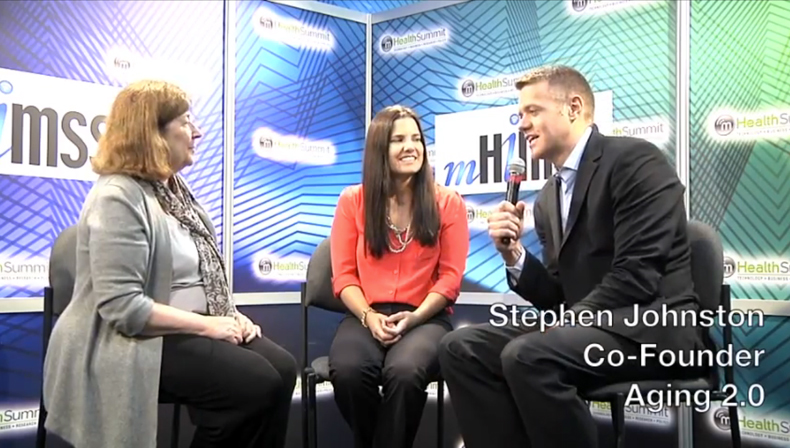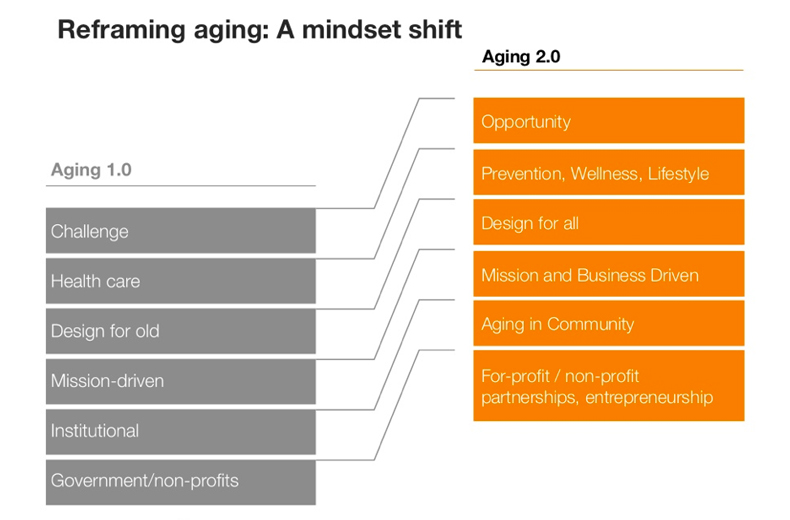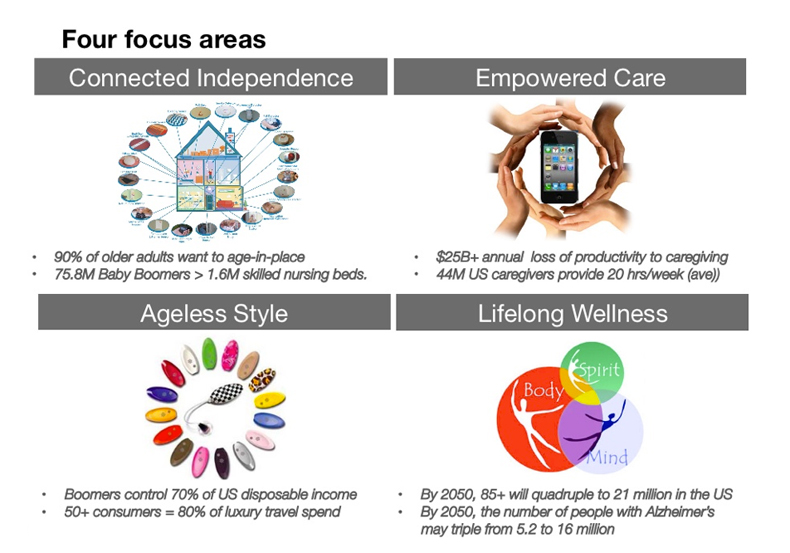Feb 04, 2013 8 Questions With: Stephen Johnston
I first met Stephen Johnston and Katy Fike of Aging2.0 last year at the Silicon Valley Boomer Summit, introduced via our incubee company, Omhu. Struck by their passion to build a network of innovators to address needs of the mature market, I was impressed with the both the depth of conversations being induced as well as the positive momentum that Aging2.0’s collaborations are creating. Aging2.0 identifies and supports innovators working in large and small companies who are developing solutions for the 50+ market, and helps them connect with markets around the world. It is a fantastic network of cross-disciplinary, inter-generational group of entrepreneurs, investors, researchers, technologists, designers, and others who share common values of innovation, collaboration and respect for all ages. Together with their key partners, Aging2.0 builds a platform for innovation, based on events, content and community. We could learn a lot from these pioneers and this community, and hopefully start a business or two in this arena.Why was Aging 2.0 founded and what do you hope to achieve long-term?
Aging2.0 was founded to encourage more great companies and talented entrepreneurs to focus their efforts on the 50+ market. In the medium to long-term I’d like to see an explosion of interest in the space – bringing higher quality products and services at lower costs to improve the lives of older adults around the world.
I got interested in this space initially as one of my innovation consulting clients was a family foundation setting up a research program to find a cure for a rare dementia. I was amazed at the lack of progress in diagnosis, treatment and products to improve the quality of life, and realized it was true for the aging space more broadly. I started blogging about innovation and aging in 2011, and teamed up with Katy Fike, PhD last year to run a series of meetings around the US and UK to connect with other innovators and build a community. I’ve spent most of my career building up collaborative innovation networks of one sort or another, and Aging2.0 is in a sense a continuation of what I’d done before in international trade and in the mobile business.
What has been the best thing about the growth of your Aging 2.0 network?
Coming into contact with so many interesting people, and convincing others to focus on this under-served market. I had no idea before starting this that there was such talent in the space, and we’re seeing more and people from top schools and interesting backgrounds decide to participate in what still feels like a ‘village industry’. There have always been good and passionate people who are keen to make a difference, but up until now they’ve not had a platform that brings them together under one roof.
What are some of the challenges in accelerating innovation in the 50+ space?
This is one of the first questions we ask the entrepreneurs and innovators we meet, and without a doubt the ones that come up most are the fragmented market when it comes to distribution, difficulty of getting customer insights, and the branding and marketing challenges. Distribution is so challenging because there are a plethora of players and niche markets with little consolidation, still low (but growing) online penetration for the 65+ segment and multiple gatekeepers such as the adult children, caregivers and senior living facility staff who all require different sales techniques. It’s also really hard to get good data about the space, and often difficult to connect directly with older people.
What projects are you currently working on?
We ended last year on a high – the mHealth Summit had asked us to co-host the EngAGE Pavilion together with AARP, so we brought together 20 promising startups with an audience of 4000 industry professionals. This year we’re turning the energy of last year into something more structured. We’ve done a lot of ‘manual’ brokering over the past year – connecting great entrepreneurs to designers, distributors or investors for example – and are now speaking with mentors, investors and corporate partners about something more structured. To support this we’re building up our innovators database, which already has over 1400 people on it. We’re also planning to expand our Global Tour – we had 15 events in the US and UK last year, and are now looking to head into other countries in Europe and Asia, as well as having more US events. So lots going on, and we’re keen to meet with potential corporate partners and mentors who share our mission to accelerate innovation.
Where do you find inspiration?
Living in New York offers constant opportunities to be inspired by amazing people. I’m on the board of a very inspiring non-profit that teaches technology to older adults – OATS.org, and do some volunteer work for local seniors’ organizations. Every time I tell people what I’m doing I get engaged in a conversation about how this or that needs to change. And now that I live in Brooklyn I spend quite bit of time running and biking around the New York boroughs, it’s amazing how many ideas that come up during a long run along the water!
What is your favorite place to travel? Why?
I’m from the UK and love going back to Europe – it’s such a jumble of colorful cultures and interesting stories. I’ve just returned from a ski holiday in the French Alps and there’s nothing like the Alps when the weather’s cooperating – amazing scenery, great skiing and fabulous food.
What are you currently reading?
Thanks to my Kindle, I carry around with me about 20 half finished books. I’m just (belatedly) discovering John Le Carré, and just finished A Most Wanted Man. I also have really enjoyed Frans Johansson’s The Click Moment – a surprising book about innovation, and – geek alert – Dick Stroud and Kim Walker’s just-released book – Marketing To The Ageing Consumer, which does a great job of helping you do exactly that.






